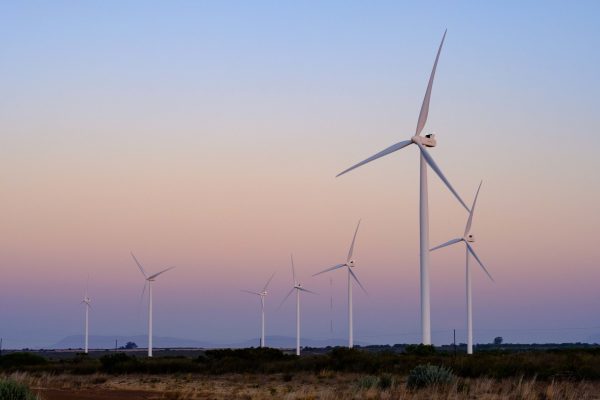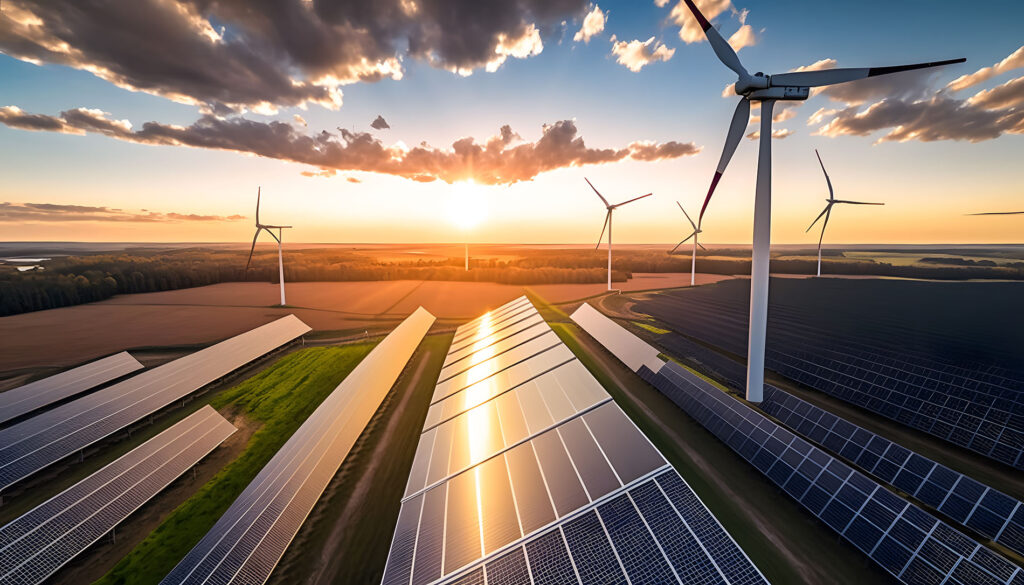
Wind energy in South America presents an opportunity to enhance energy infrastructure. It has diverse landscapes with plenty wind resources that can lead to energy security if harnessed effectively. Wind energy can also help meet the rising demand in South American countries. Countries like Argentina, Brazil, Chile, Colombia and Uruguay have great potential for wind energy. This is due to their vast and diverse landscapes with excellent wind conditions. Many South American countries have also implemented policies that promote wind power. Examples include Argentina’s RenovAr program, Brazil’s PROINFA program and Chile’s Energy Transition Goals.
Hybrid wind energy projects in South America
As countries strive for energy independence, diversification and sustainability, hybrid wind projects gain power in the region. Combining wind energy and other renewable sources provide enhanced energy production. Hybrid projects include energy storage technologies that further enhance grid stability. Wind and solar energy show complementary generation patterns which leads to a more consistent power output. Examples of hybrid wind projects in South America include combination of wind farms and solar plants in Brazil, Argentina and Chile. Use of guy wires and anchors provide extra support to towers especially in areas with high wind loads. They also connect and support the conductors to ensure the integrity of the power line.
Challenges facing hybrid projects in South America
Hybrid wind projects in South America provide opportunities to enhance energy security and optimize renewable energy generation. They also pave the way towards a sustainable energy future in the region. Addressing these challenges requires coordinated efforts from governments, investors and technology providers. The following are the common challenges facing hybrid wind projects in South America.

- Grid integration – integration of hybrid projects into existing power grids needs careful planning and investment in grid infrastructure.
- Economic viability – achieving economic competitiveness for hybrid projects depends on technology costs, incentives and market dynamics.
- Policy frameworks – supportive policies and regulatory frameworks are important for the successful development of hybrid wind projects.
- High initial investment costs –the projects involve upfront costs due to the installation of wind turbines and energy storage systems. Securing financing for large-scale projects can also be a challenge.
- Technical complexity – combining wind power with other renewable sources like solar or hydro requires engineering and control systems. It is also important to ensure compatibility with existing grid infrastructure.
- Environmental and social considerations – hybrid wind projects should balance the need for land for wind turbines with agricultural, environmental and community interests.
Technological advancement in hybrid wind projects
The presence of technological advancements in hybrid wind projects drive the growth of renewable energy in South America. These advancements include turbine technology, energy storage, smart grid integration and material science. They are making hybrid projects more efficient, reliable and cost-effective. The advancements offer the opportunity for South America to maximize their renewable energy potential. They also help improve energy security and contribute to global sustainability goals. Brazil are exploring floating wind technology to harness offshore wind resources. There are also other projects combining wind and solar power to take advantage of the region’s high renewable potential. Chile is combining solar power from the Atacama Desert with coastal wind resources. Patagonia hybrid projects in Argentina are utilizing the strong winds alongside solar power. This is to create hybrid energy systems. The following are the technological advancements in hybrid wind projects.

- Energy storage systems – this includes the use of battery storage, pumped hydro storage and thermal storage. These systems store excess energy and release it during low production periods. They also help balance supply and demand in hybrid renewable energy systems.
- Smart grid and digital technologies – the development of smart grids allows for better integration and management of hybrid energy sources. Use of IoT devices and data analytics provide real-time monitoring and predictive maintenance.
- Improved grid infrastructure – high voltage direct current allows for efficient long-distance transmission. Microgrids in remote areas enable localized management of hybrid renewable energy.
- Floating offshore wind technology – floating wind turbine technology allows for the deployment of wind farms in deeper waters. Combining floating wind turbines with solar panels and wave energy converters on the same platform maximizes the use of ocean resources.
- Enhanced materials and design – advances in material science led to the development of more durable and weather resistant components for wind turbines and solar panels.